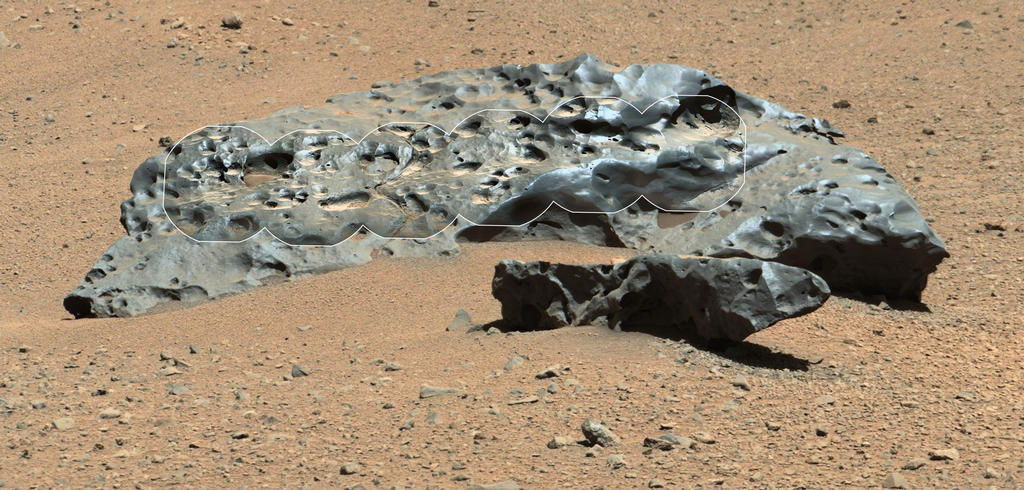
See our meteorite mosaics below
Heralding another notable achievement, NASA’s industrious rover Curiosity has simultaneously discovered her 1st meteorites on the Red Planet. NASA has just released a new mosaic – shown above – of the meteorite named “Lebanon” found by Curiosity in late May and illustrated in the newly published imagery and classed to be an iron or ‘heavy metal’ meteorite.
The SUZ sized robot actually found at least a pair of “iron meteorites near each other,” Jet Propulsion Laboratory (JPL) spokesman Guy Webster confirmed to AmericaSpace.
And they are not some puny things either. Rather the shiny, odd shaped object found by Curiosity and named “Lebanon” measures about 6 feet (2 meters) in diameter.
“They are the first confirmed iron meteorites found by Curiosity,” Webster told me.
The second nearby and as yet unnamed meteorite is also about 6 feet (2 meters) wide.
“Lebanon and another iron meteorite about the same size was found nearby at the same time,” Webster said.
Furthermore “Lebanon” may have fragmented into pieces since a smaller rock named “Lebanon B” is visible in the robots images.
“The two larger meteorites (not counting smaller Lebanon B) were the first confirmed iron meteorites found by Curiosity,” Webster stated.
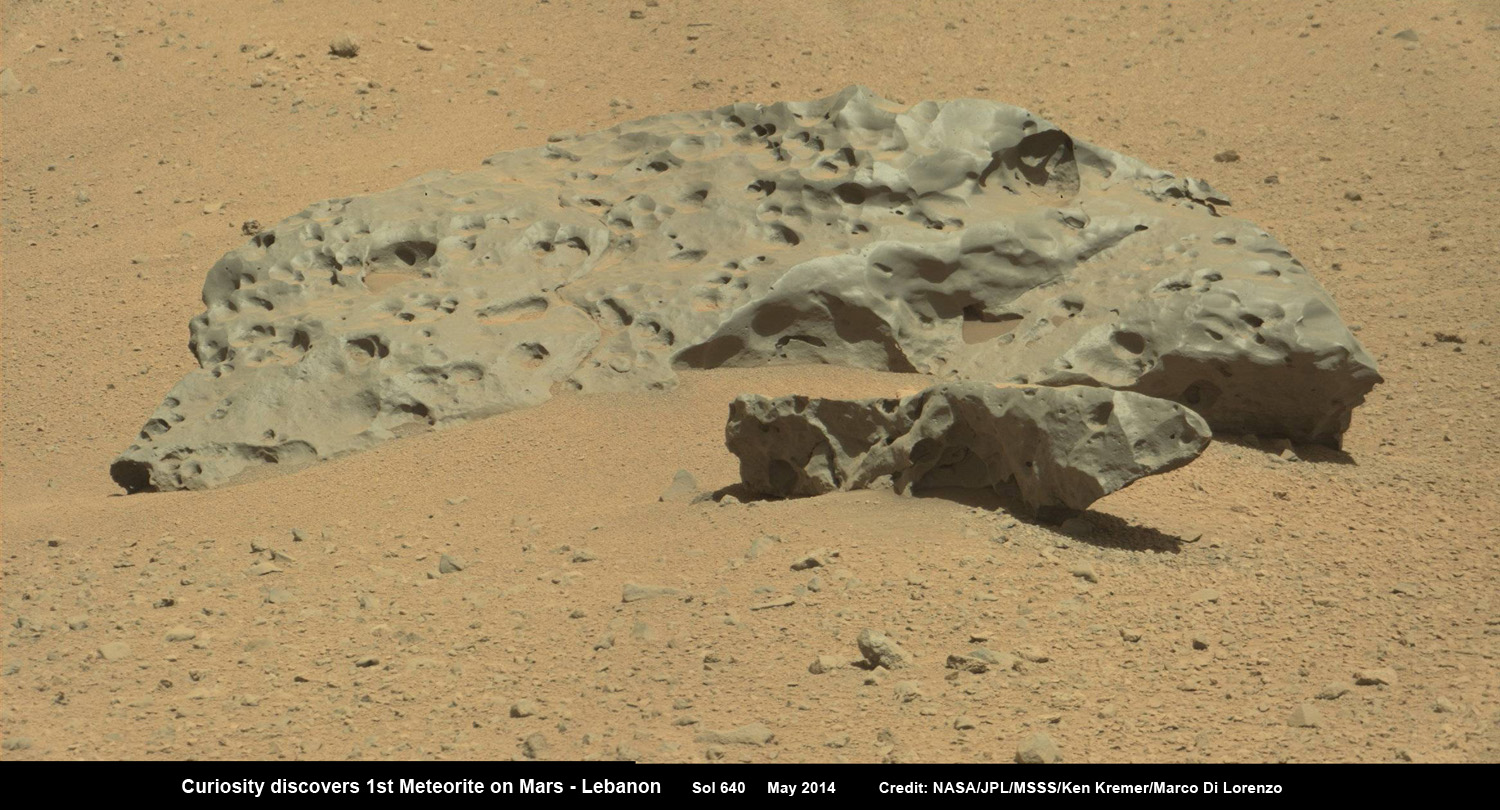
Meteorites are alien space rocks. They originate from rocks in outer space that survived the excruciatingly hot temperatures and high pressures encountered during the terrifying plummet through the planet’s atmosphere and ending in a high speed surface impact. Think “The 7 Minutes of Terror” – but with no parachutes or retrorockets.
The newly released composite photo mosaic seen above combines high-resolution imagery taken by the Remote Micro-Imager (RMI) of Curiosity’s Chemistry and Camera (ChemCam) instrument with color and context from rover’s mast mounted Mast Camera (Mastcam).
The individual images were captured on Martian Sol 640 on May 25, 2014.
A smaller piece seen in the foreground may have broken off and is named “Lebanon B.”
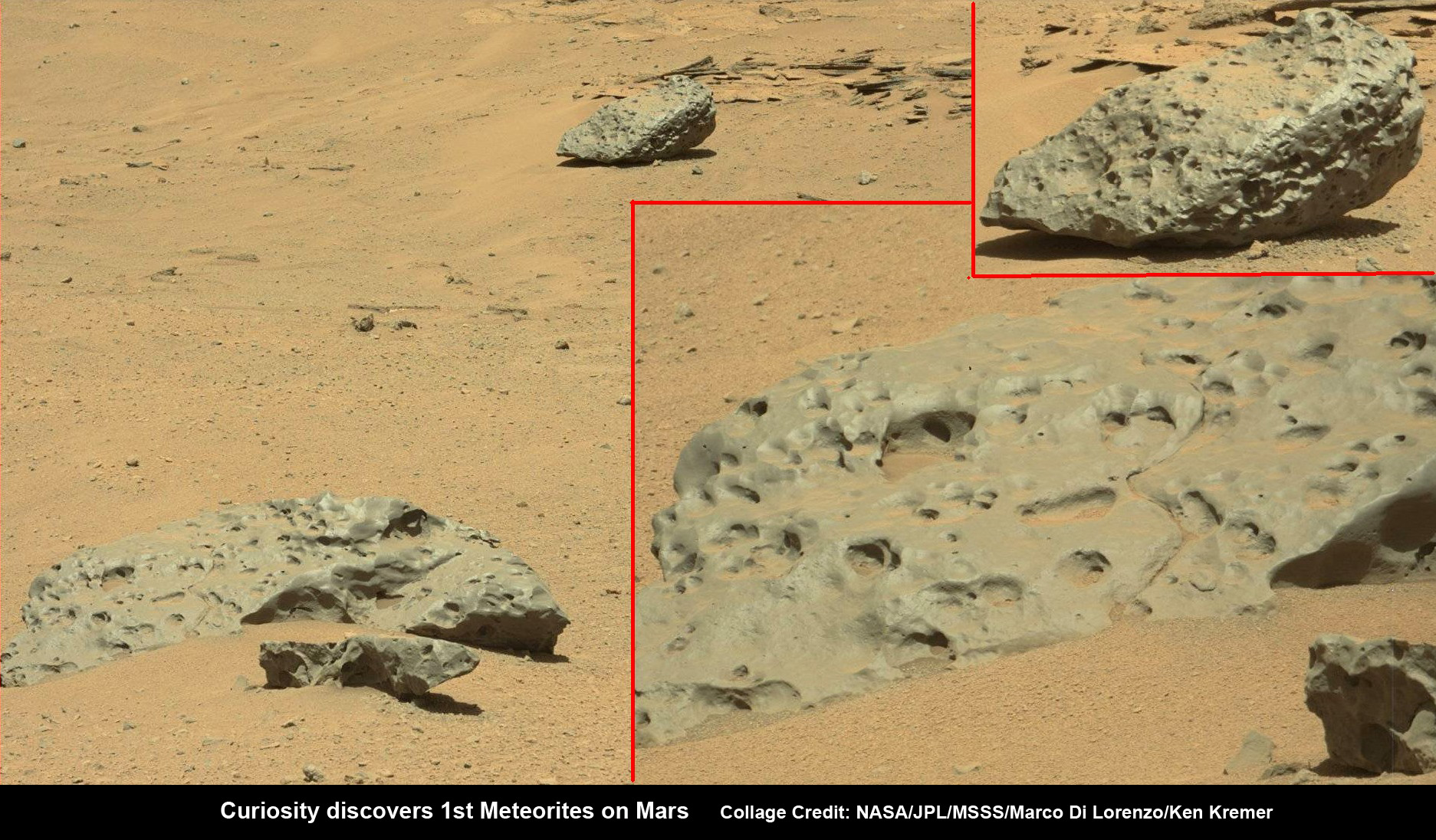
Lebanon exhibits angular shaped cavities on its surface. These may have “resulted from preferential erosion along crystalline boundaries within the metal of the rock. Another possibility is that these cavities once contained olivine crystals, which can be found in a rare type of stony-iron meteorites called pallasites, thought to have been formed near the core-mantle boundary within an asteroid,” according to a NASA statement.
Curiosity is now in the midst of an epic trek across the floor of Gale Crater aspiring to reach the foothills of mysterious Mount Sharp on her quest to elucidate the history of Martian habitability.
See below our context photo mosaic showing the region nearby to the “Lebanon” iron meteorite.
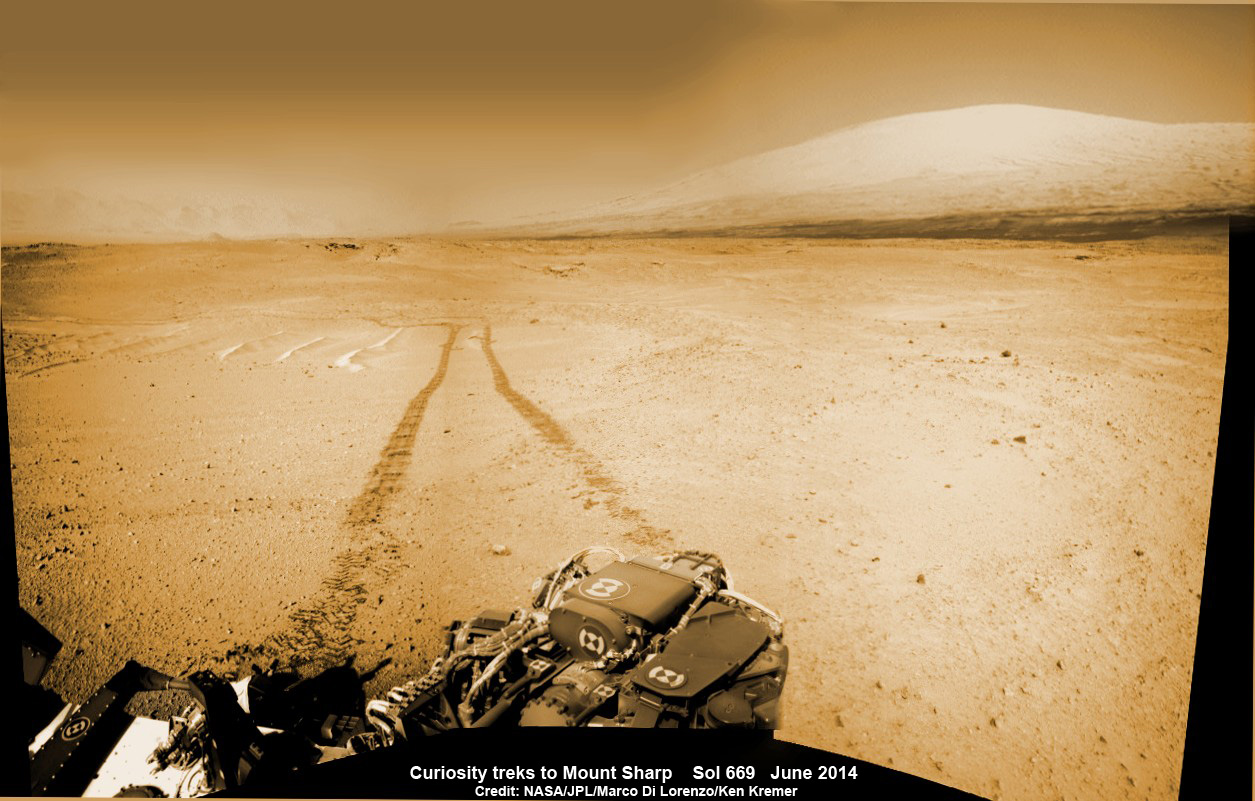
Curiosity treks to Mount Sharp in this photo mosaic view captured on Sol 669, June 24, 2014 – the day the rover celebrated 1 Martian year since touchdown on the Red Planet. Navcam camera raw images stitched and colorized. Credit: NASA/JPL-Caltech/Marco Di Lorenzo/Ken Kremer – kenkremer.com
Using her state-of-the-art analytical instruments and based on its physical appearance, Curiosity determined that “Lebanon” belongs to a class known as iron meteorites.
“Heavy Metal! I found an iron meteorite on Mars,” Curiosity trumpeted in a new tweet from Mars.
Lebanon is not the first meteorite discovered by a Mars rover. Her world renowned older twin sisters – Spirit and Opportunity – both discovered a variety of Martian meteorites during their years long expeditions across the Red Planet.
“Lebanon is similar in shape and luster to iron meteorites found on Mars by the previous generation of rovers, Spirit and Opportunity,” says NASA.
The six wheeled rover chanced upon Lebanon in late May 2014 shortly after departing the “Kimberley Waypoint” in mid-May while trundling across the smooth sands of alien Martian terrain on the floor of her Gale Crater landing site.
Curiosity conducted her 3rd Martian deep drilling campaign on May 5, Sol 621, by boring a fresh hole into a slab of sandstone rock target named “Windjana” – located at the base of a hill named “Mount Remarkable” at an science stopping point named “The Kimberley.”
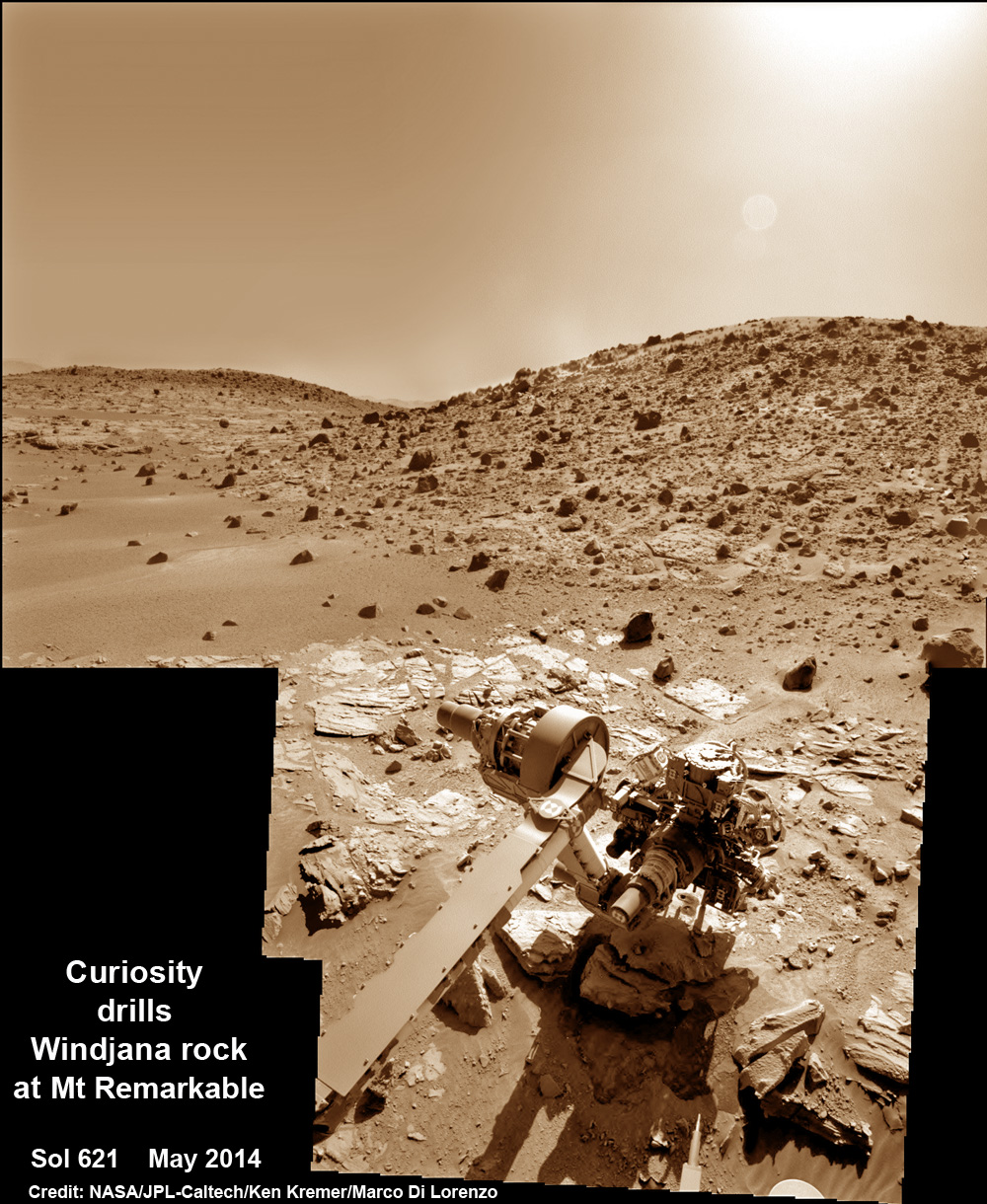
On Mars, iron meteorites are the most common type discovered so far among the very limited number discovered to date. The reason for their seeming ubiquity may be their resistance to erosion processes on Mars, according to NASA. But a lot more meteorites need to be discovered and data acquired before making any definitive statements.
On Earth, most meteorites are classed as stony meteorites. Only about 6% are classes as iron meteorites. A few have been identified as Martian meteorites. The most famous is ALH84001 – once thought by some to contain Martian microfossils.
Curiosity has been on the move since mid-May since finishing up the drill operation at “The Kimberley.”
The lower reaches of Mount Sharp are the rovers ultimate goal because the sedimentary layers are believed to hold caches of water altered minerals based on high resolution measurements obtained by the CRISM spectrometer aboard NASA’s powerful Mars Reconnaissance Orbiter (MRO) – soaring overhead.
Curiosity still has about another 2.4 miles (3.9 kilometers) to go to reach the entry way at a gap in the dunes at the foothills of Mount Sharp sometime later this year.
So far Curiosity’s odometer totals over 5.1 miles (8.4 kilometers) since landing inside Gale Crater on Mars in August 2012. She has taken over 166,000 images.
Stay tuned here for continuing updates.
Want to keep up-to-date with all things space? Be sure to “Like” AmericaSpace on Facebook and follow us on Twitter: @AmericaSpace
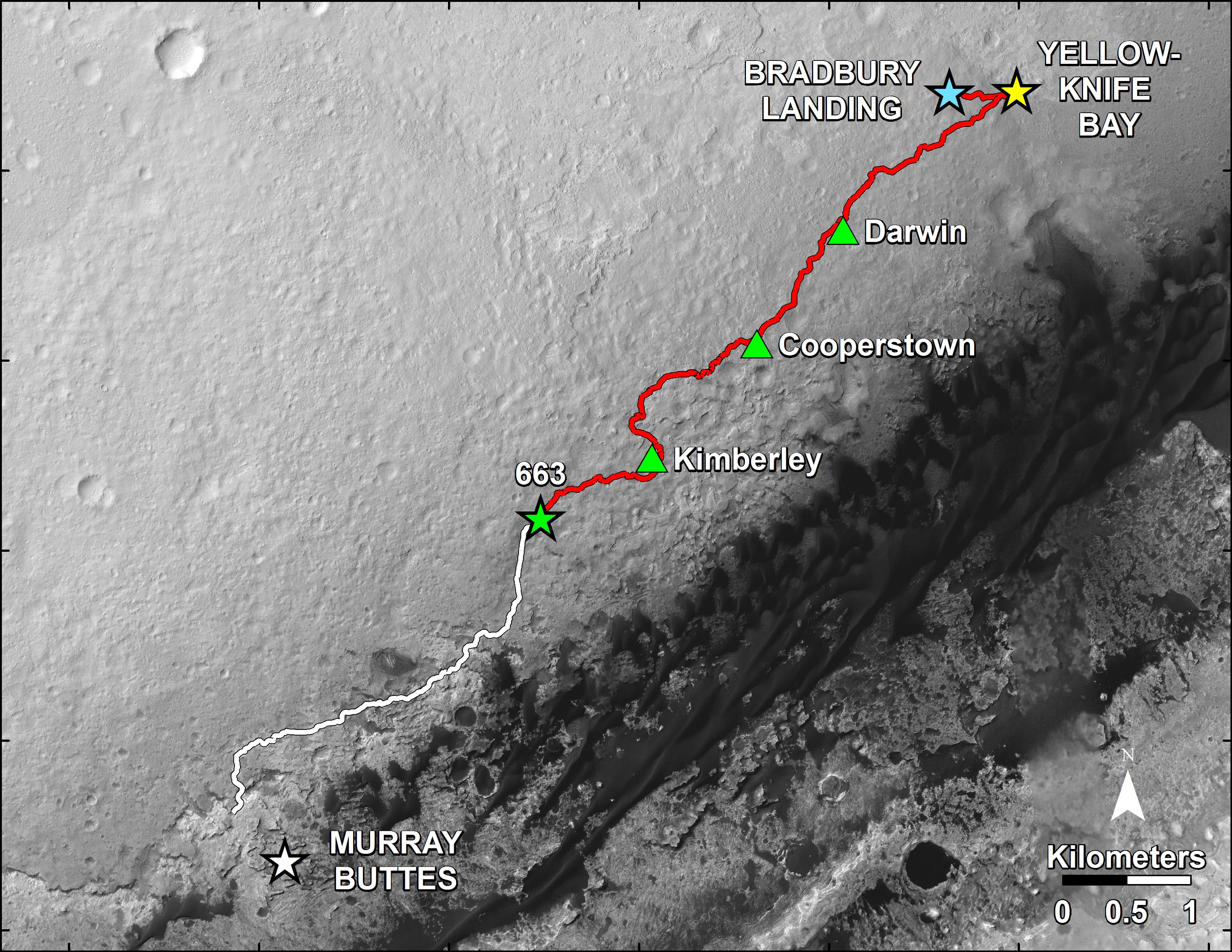




These are the things you find on planets that haven’t been picked over for thousands of years by humanity. An Iranian once told me they used to find gold just laying around rivers in his country. Imagine what other things are waiting for us on mars? People could find in a day what it takes a rover a month to find.
Mars has ALL the resources needed for an independent industrial society.
A valuable resource…
Finding an iron meteorite is indeed an exciting and fascinating discovery, but the prospect of finding a large deposit of iron meteorite ore, taking resource consuming heavy mining equipment to Mars, refining ore in situ, and returning it to Earth at at a price competitive with that dug out of the ground on Earth is extremely implausible. Have they also found the other elements necessary for the refining process? The average blast furnace uses enough water every day to provide every person in the United States with a two liter bottle of water, and what of the oxygen necessary to burn off the carbon to make steel? With the advent of 3-D printing, digging rocks out of the ground, heating them to a very high temperature, pumping oxygen into the liquid iron, pouring it into ingots, pressing the ingots into sheet steel, and then machining a part may not be the most efficient and practical method of creating needed parts on Mars. The meteorite is of great scientific interest, but before you start tallying up the huge profits just waiting to be made mining Martian meteorites, it might be wise to float the idea before some Wall Street financial analysts and investment advisers. No doubt they would find the idea of investing millions of their clients dollars in a plan to mine Martian meteorites very . . . amusing.
These are not the first meteorites found one Mars. Spirit and Opportunity have both identified iron meteorites.
These are not the first meteorites found on Mars. Spirit and Opportunity have both identified iron meteorites.